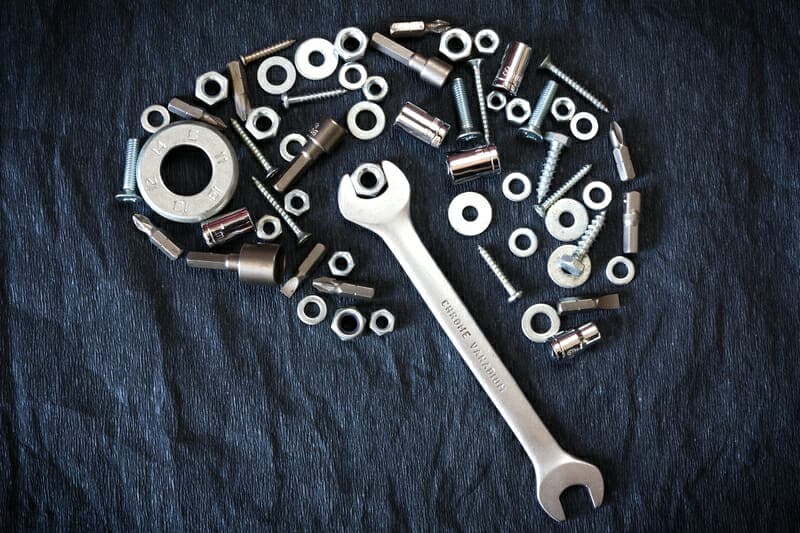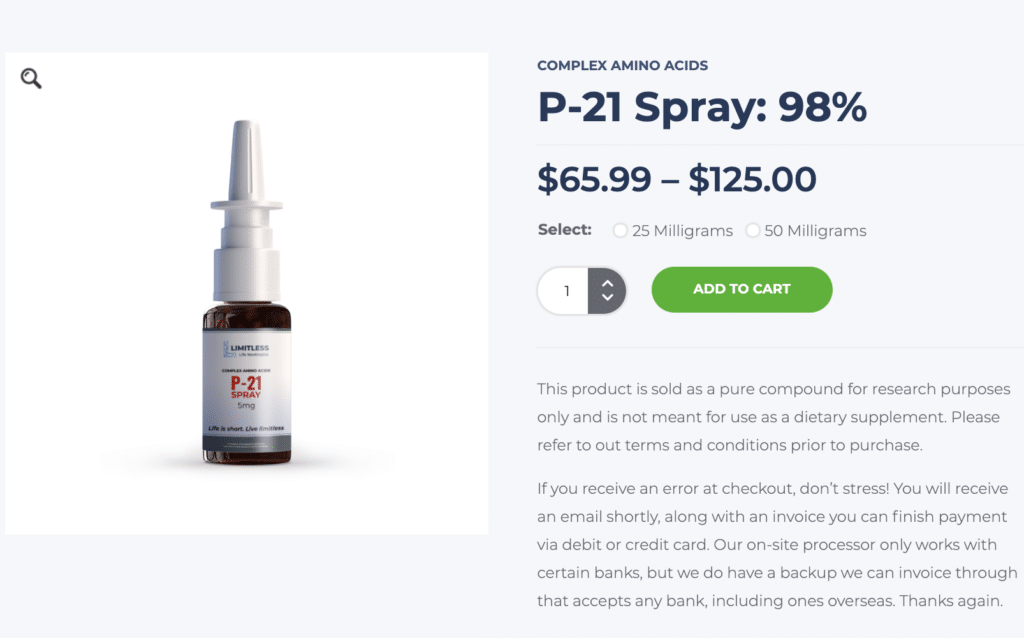Cerebrolysin is by and far one of the most well-studied peptides for treating neurodegenerative diseases, let alone as a medical treatment option.
With cognitive decline on the rise, while manifesting in many different types of diseases, it is more imperative than ever to fully optimize our brain health.
There are the obvious lifestyle solutions such as the trifecta of diet, exercise, and sleep… but some people may need an extra boost in cognition to prevent or even reverse early declines of cognitive function.
So where exactly does Cerebrolysin fit into the picture here?
And what are the disease states where Cerebrolysin has been proven to be effective?
This article will answer all of those questions and much more, so get ready to learn everything you could possibly want to know about the peptide known as Cerebrolysin!
Table of Contents
ToggleWhat is Cerebrolysin Peptide?
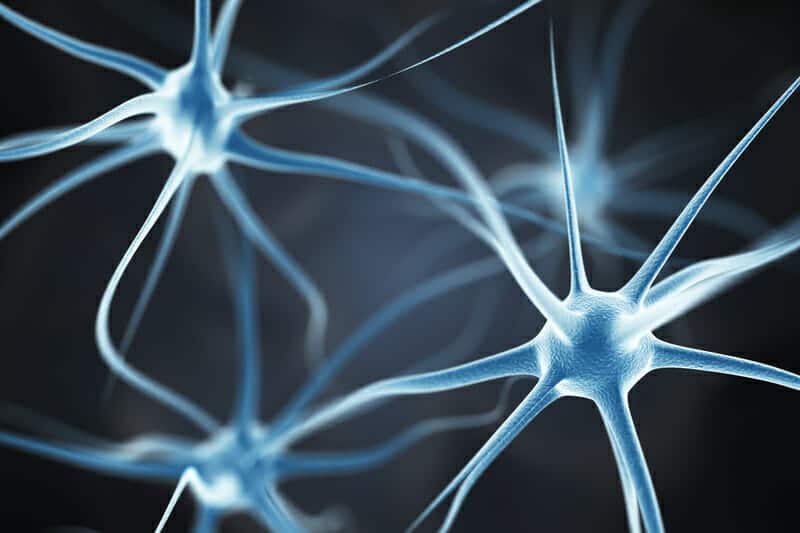
If you look at the available information for Cerebrolysin from Ever NEURO Pharma, the pharmaceutical company that owns this drug, the description is rather disappointing:
“Cerebrolysin® is a biotechnologically prepared peptide that stimulates neurotrophic regulation in the central nervous system.”
Further digging will give you a more detailed examination into the composition of Cerebrolysin:
“It is a non-lipid mixture of free L-amino acids and neuropeptides of low molecular weight that are purified via enzymatic proteolysis from brains of young pigs. It also contains magnesium, phosphorus, potassium and selenium”
More specifically, those L-amino acids are derived from the pig brains and make up 75% of Cerebrolysin, while the remaining 25% consists of neuropeptides such as nerve growth factor, ciliary neurotrophic factor (CNTF), and brain-derived neurotrophic factor (BDNF).
The low-weight neuropeptides are no larger than 10,000 Daltons, which explains why Cerebrolysin can effective penetrate the blood-brain barrier and directly exert its effects on the brain.
As for its history, Cerebrolysin dates all the way back to 1949 when it was first discovered:
“The drug was created in 1949 by Gerhart Harrer, an Austrian Professor, and approved on 1 August 1954. After many success stories, extensive research, and discovery of neurotrophic regulation, its popularity has increased drastically and now it can officially be used as a treatment for various cerebral disorders in 44 countries, mostly in Europe and Asia.”
(NOTE: These two links – here and here – go much deeper into the history of Cerebrolysin and how it eventually got approved by regulatory bodies)
So while countries such as Russia, South Korea, and Germany have the green light for using Cerebrolysin as a medical treatment, it has yet to be approved in the US by the FDA.
But how exactly does this mixture of neuropeptides and amino acids known as “Cerebrolysin” work in the human body?
Cerebrolysin Mechanism of Action
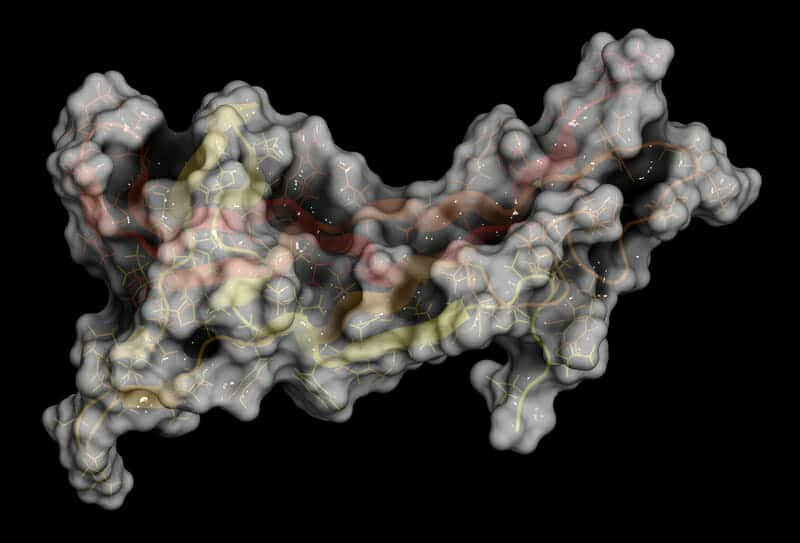
Again, if we refer to the official Cerebrolysin website, you’ll get a nice infographic that summarizes how Cerebrolysin works in the human body:
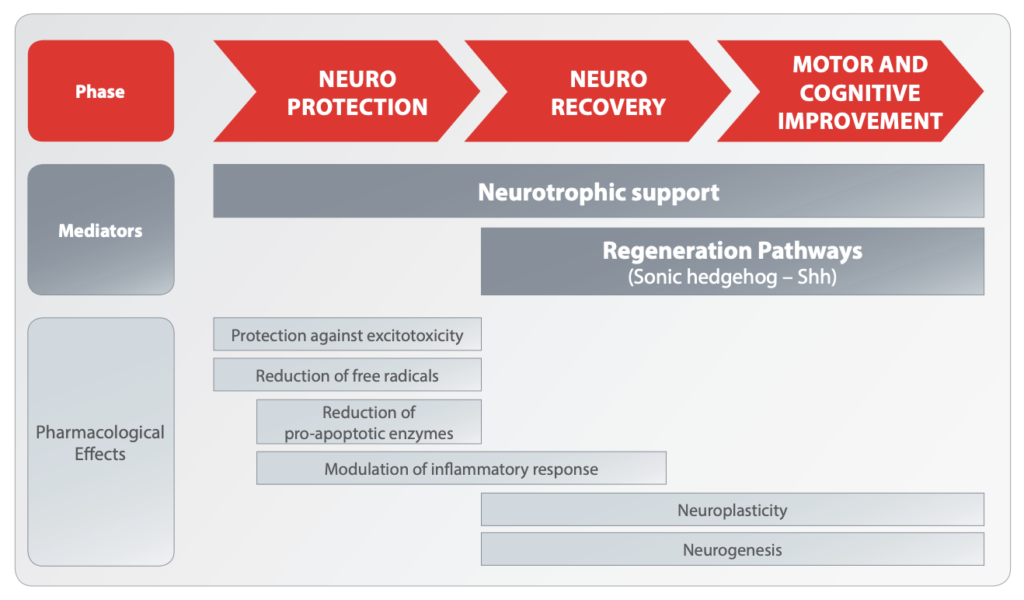
(Source)
But if we want to get into the technical details, Cerebrolysin is able to easily pass the blood-brain barrier and lead to the following downstream effects:
“… supports endogenous regeneration processes, mimics the behaviour of neurotrophic factors and modifies their level, affects the Sonic Hedgehog protein’s signalling pathway, protects from the pathological events and cascades which stem from an injury or a neurodegenerative disease, reduces amounts of free radicals as well as pro-apoptotic enzymes, modulates inflammatory response and also affects neuroplasticity and neurogenesis.”
Not to mention that it literally gives you more energy via “increased energy metabolism (the decrease in the level of lactate in the nervous tissue and the optimization of mitochondrial processes)” (Source).
Other effects of Cerebrolysin include “increased synaptic regeneration, enhanced neurogenesis, decreased apoptosis, increased dendritic spine density and dendritic length as well as antioxidative and anti-inflammatory effects” (Source).
And just like intermittent fasting and aerobic exercise, Cerebrolysin can also increase brain-derived neurotrophic factor (BDNF) production… which directly leads to the increased brain plasticity needed for faster learning and better memory retention.
To summarize everything I’ve just talked about so far in two short sentences…
Cerebrolysin contains natural neuropeptides that stimulate protein synthesis and neuron growth, support their functions, and help them to communicate with each other.
The peptide restores damaged neurons and slows down neuron damage while protecting them from the onset of unwanted symptoms, which explains Cerebrolysin’s ability to simultaneously tackle multiple domains of neurodegeneration
Benefits of Cerebrolysin
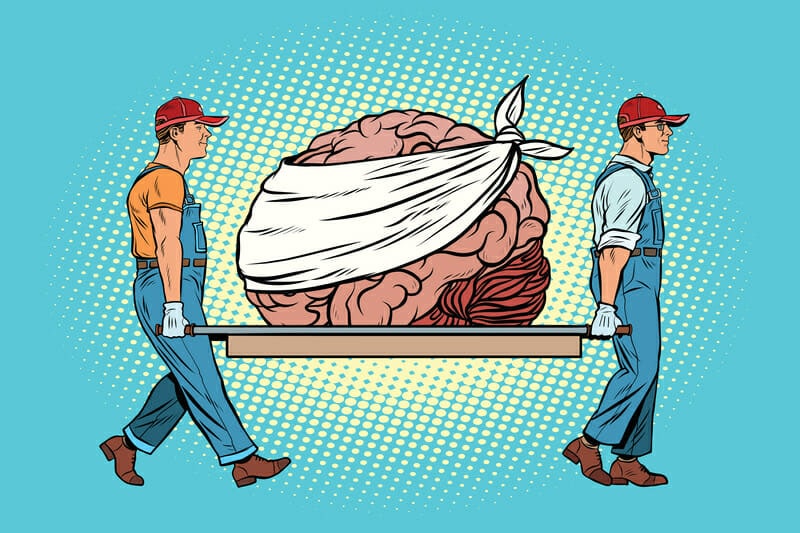
Cerebrolysin has to be by far one of the most extensively researched peptides I have promoted to date, with 478 studies available on PubMed published between 1973 and 2020 (at the time of this writing).
It has shown amazing potential in treating multiple neurodegenerative disorders, which makes sense when you consider how it works in the human body.
But I want to use this article to focus on the top 10 health benefits of Cerebrolysin – ones that have the most research and evidence backing the therapeutic power of this peptide.
Cognitive Recovery From Strokes
Believe it or not, a stroke doesn’t only affect your heart – it has a significantly negative impact on your brain health as well:
“As many as two-thirds of stroke patients experience cognitive impairment or cognitive decline following a stroke; approximately one-third go on to develop dementia. The risk for cognitive impairment or decline is increased by a history of stroke. The risk for developing dementia may be 10 times greater among individuals with stroke than those without”
There are an overwhelming number of studies investigating the use of Cerebrolysin in patients who have had a stroke, with numerous beneficial outcomes:
- Improvements in a patient’s level of consciousness
- “…a beneficial effect on function and global outcome in early rehabilitation patients after stroke” (discontinuation rate was less than 5%, with Cerebrolysin treatment being safe for all patients)
- Promotes motor recovery in patients who have severe motor impairment following a stroke
- Significantly improved neurological outcome (i.e. a functional recovery)
However, there seems to be some mixed results when you look at all of the randomized controlled trials (RCTs).
A 2017 Cochrane review of seven RCTs found that Cerebrolysin had “little or no beneficial effect on preventing all‐cause death in acute ischaemic stroke, or on the total number of people with serious adverse events”.
Yet another meta-analysis of nine RCTs published in the same year concluded that “Cerebrolysin has a beneficial effect on early global neurological deficits in patients with acute ischemic stroke”
Regardless of the opposing perspectives on using Cerebrolysin for patients suffering from a stroke, there is a uniform agreement about the safety of Cerebrolysin as a treatment arm.
Can Speed Up Recovery From Traumatic Brain Injury (TBI)
As I’ve talked about in the past, traumatic brain injury (TBI) is the #1 problem being faced by military veterans who do not receive appropriate medical attention after returning from overseas missions.
Cerebrolysin, with all of its neuroprotective properties, may very well be an effective treatment option for these individuals:
“Cerebrolysin is associated with improved functional recovery in patients with severe disability after TBI.
Cerebrolysin is associated with decreased mortality rate in patients with severe disability after TBI.
Cerebrolysin is associated with increased favorable outcome in patients with severe disability after TBI.”
It appears as if Cerebrolysin’s positive effects take place “independent of disease severity, time course or disability” (Source) and take up to 3 months before they fully manifest.
However, treating TBI as early as possible could lead to improved clinical outcomes as early as 10-30 days following the start of Cerebrolysin treatment.
All of these effects appear to be replicable when you look at the collective weight of evidence gathered from clinical trials and cohort studies.
Improves Measures of Cognitive Function in Dementia Patients
Since 2009, it has been well-established that Cerebrolysin can uniformly improve the desired outcomes of treating dementia:
“In several randomized, double-blind trials of up to 28 weeks’ duration in patients with Alzheimer’s disease, Cerebrolysin was superior to placebo in improving global outcome measures and cognitive ability.
A large, randomized comparison of Cerebrolysin, donepezil or combination therapy showed beneficial effects on global measures and cognition for all three treatment groups compared with baseline”
The same can be said for a type of dementia known as “vascular dementia”:
“Vascular dementia is a common form of dementia caused by damage to the network of blood vessels supplying the brain.
Some of the symptoms are similar to those associated with Alzheimer’s disease and stroke but in particular those with vascular dementia often experience difficulty thinking quickly, concentrating and communicating, as well as seizures and severe confusion”
And when you look at the randomized controlled trials investigating Cerebrolysin for this specific use, you also see a marked improvement in cognitive function:
“A recent systematic review published in the Cochrane library examined data from six randomized controlled trials of Cerebrolysin, involving 597 people in total, and found that the drug significantly improved cognitive function.
…Across all six trials, compared with placebo or standard care alone, Cerebrolysin was found to improve cognition as measured by scales testing recall, arithmetic, cognitive and cognitive abilities.”
To hype up these results even more, Cerebrolysin’s effects are long-lasting and appear to reverse some of the neurological damage brought about by dementia:
“Beneficial effects were also reported in activities of daily living and in behavioral performance.
Due to the observed long-lasting treatment effects, Cerebrolysin seems to delay disease progression, which is in line with its pleiotropic mode of action targeting different molecular pathways in this pathologic cascade”
In a way, it’s good to know that Cerebrolysin is not a peptide which you have to keep on taking for the rest of your life (although there would be absolutely nothing wrong with this).
Can Treat Alzheimer’s Disease
One of the most comprehensive reviews of Cerebrolysin for treating Alzheimer’s disease reached the following conclusion after examining 30 years worth of clinical data:
“Cerebrolysin, acting as a multitarget peptidergic drug with a neurotrophic mode of action, exerts long‐lasting therapeutic effects on AD that could reflect its potential utility for disease modification.
Clinical trials demonstrated that Cerebrolysin is safe and efficacious in the treatment of AD, and may enhance and prolong the efficacy of cholinergic drugs, particularly in moderate to advanced AD patients.”
A meta-analysis of 6 randomized controlled trials published in 2015 agrees with the above sentiment, noting that “Cerebrolysin has an overall beneficial effect and a favorable benefit-risk ratio in patients with mild-to-moderate AD” and “should be considered by clinicians seeking treatment options for mild-to-moderate AD.” (Source).
(By the way… this infographic does a great job of visualizing the results of this meta-analysis)
All of these benefits are realized, regardless of whether Cerebrolysin is used at low, medium, or high doses.
A possible mechanism of action to explain these results could be the reduction of TNF-α and the increase of IGF-I levels, both of which are the opposite outcomes of chronic inflammation.
Might Be a Worthwhile Therapeutic Treatment for Spinal Cord Injury (SCI)
I believe this application of Cerebrolysin will be one of the last benefits to be fully realized, as it takes a significant amount of research and testing before ANYTHING related to SCI is ever tested in humans.
With that being said, the studies done on rats are rather promising.
One study treating SCI-afflicted rats with Cerebrolysin reported a marked increase in the recovery of basic motor function within the spine.
To dive deeper into the specifics, Cerebrolsyin is believed to exert this outcome via “reduced spinal cord water content, leakage of plasma proteins and the number of injured neurons” (Source).
Other possible mechanisms of action include improving electrical conduction within the spine while simultaneously decreasing the breakdown of the barrier between the blood and the spinal cord (Source).
May Be Effective in Treating ADD / ADHD
Surprisingly, this specific benefit of Cerebrolysin is of great interest to researchers in Russia.
This interest was sparked when it was found that ADHD is apparently the manifestation of deeper immunological problems:
“Children with attention deficit syndrome with hyperactivity (ADSH) are characterised by attention and motor deficiencies and obvious immune disorders, which manifest as recurrent acute viral respiratory tract infections and changes in immunological parameters”
“The effect of cerebrolysin on immunological parameters was studied in vitro and in vivo. Cerebrolysin was administered in a dose of 1 ml per 10 kg of weight intramuscularly during 1 month. The administration of cerebrolysin resulted in a simultaneous normalization of neurological and immune disorders and in a reduction in the illness rate.“
Yet when Cerebrolysin was used in adults suffering from ADHD, the results were rather surprising (in a good way):
“Thirty-eight patients with ADHD, aged from 18 to 45 years were enrolled in the study… The results of the study showed that cerebrolysin was an effective tool for improving cognitive control in adult patients with ADHD (a significant improvement was noted in 42.1% of patients, improvement in 31.6% of patients).”
One patient has reported his experience in using Cerebrolysin consistently for a year to treat his ADHD:
“I am the only (to my knowledge) person who has done a 14 month course (5 days on 2 days off) no breaks inbetween of this and only this nootropic”
“…it work incredibly well and massively improved my working memory, learning and attention, you also become stress and depression free (a well noted side effect of cerebrolysin)”
“…it worked far better than pharmaceutical medication and I had the financial ability to run it indefinitely. On reflection it was great being able to remember things so well (ADHD = very poor working memory)”
If these results are to be taken at face value, it would be worthwhile for physicians to further investigate the use of Cerebrolysin in patients suffering from ADD / ADHD.
Shows Potential For Treating Parkinson’s Disease
Parkinson’s disease is yet another neurodegenerative disease that is in desperate need of a treatment which can actually reverse the damage inflicted on patients.
Cerebrolysin has shown some promising results in several rat studies (here and here), with outcomes such as replenished neurotransmitter levels, improved behavioral outcomes, and fighting against the negative effects of oxidative stress.
Researchers have also examined the use of nanoparticles to improve the delivery of Cerebrolysin, which have “superior neuroprotective effects in Parkinson’s Disease” (Source).
An explanation for why this is the case can be found in other studies investigating the nanodelivery of Cerebrolysin:
“Despite the drug’s efficacy in animal models, scientists have not been able to get CBL to the brain before the body’s own enzymes degrade it. Simply giving higher doses leads to adverse events, forcing scientists to find ways to deliver CBL directly into the brain”
“While the mechanism through which titanate improves delivery is not entirely clear, titanate may help by prolonging the delivery of intact CBL [cerebrolysin] to the blood-brain barrier, which would allow higher concentrations of CBL to be released into the brain.”
Can Address Disease States Brought About by Diabetes
Diabetes is an especially dangerous disease because it can easily lead to the manifestation of complications such as cardiovascular disease, organ damage (eyes, kidney, etc.), and impaired mental health.
In particular, a devastating symptom of diabetes is a condition called “diabetic neuropathy”:
“Diabetic neuropathy is a serious and common complication of type 1 and type 2 diabetes. It’s a type of nerve damage caused by long-term high blood sugar levels. The condition usually develops slowly, sometimes over the course of several decades.
If you have diabetes and notice numbness, tingling, pain, or weakness in your hands or feet, you should see your doctor. These are early symptoms of peripheral neuropathy. The danger is usually when you can’t feel pain and an ulcer develops on your foot.”
The good news is that Cerebrolysin has been especially effective in early human clinical trials, helping patients restore nerve sensitivity while reducing perceptions of pain:
“…we investigated the effect of that drug for treatment of painful diabetic neuropathy in 20 type-II diabetic patients (9 women, 11 men, mean age 63 +/- 9 years, duration of diabetes 14 +/- 7 years). Patients received daily a cerebrolysin-infusion (20 ml in 500 ml Ringer) over a period of 10 days”
“…cerebrolysin led to a significant subjective improvement of painful diabetic neuropathy in type-II diabetic patients at least for a period of 6 weeks.”
Other diabetes-induced conditions where Cerebrolysin demonstrated therapeutic potential in rats include cardiac neuropathy and cognitive decline.
Could Improve Mental Functioning In Autistic Children
Autism spectrum disorder (ASD) is defined as “a complex developmental condition that involves persistent challenges in social interaction, speech, and nonverbal communication, and restricted/repetitive behaviors” (Source).
With nearly 1 out of every 59 children having some form of ASD and the condition being deemed as “uncurable”, an increasing number of boys and girls are finding it more difficult to function in everyday society.
I was quite surprised when I dug into the potential health benefits of Cerebrolysin, as several human studies demonstrate its use as a powerful treatment for addressing difficulties with basic social skills.
In one study involving kids between 3-8 years old with ASD who were treated with Cerebrolysin “showed improvement and marked lessening of the autistic features with some patients showed complete disappearance of the main autistic features”
(By the way, this treatment has also been shown to be completely safe without any adverse side effects)
Several studies originating from Russia also make the following claims about Cerebrolysin as a treatment option for young children with ASD:
“… improvement of cognitive functions (expressive and receptive speech, fine motoring, playing).” (Source)
“.. a significant decrease in mental retardation by 0.2 years… a statistically significant improvement was achieved in cognitive activity, attention during task performing as well as in self-service (by 0.3 years), receptive and expressive speech, cognitive performance and perception (by 0.2 years), fine motor function (by 0.1 years).” (Source)
And just so we are clear: I am NOT implying that those with ASD are “diseased” or have less worth than neurotypical individuals.
At the same time, I do not believe it is a stretch to say that improving obvious deficits in social behaviors of kids with ASD is a net benefit to both children and their caregivers.
Demonstrates Cognition-Enhancing Properties
Thus far, it should be clear that Cerebrolysin is primarily meant for people who have suboptimal cognitive functioning.
That doesn’t mean Cerebrolysin can’t be used by biohackers for increased cognitive performance, as you’ll discover in the next section of this article
Some of the purported outcomes of regular Cerebrolysin use include:
- Improved memory performance in elderly subjects
- Higher quality of life across numerous measurements
- Increased neurogenesis (i.e. the formation of new neurons in the brain)
Let’s see if the same outcomes can be achieved in healthy young adults who don’t have to worry about neurodegeneration…
Does Cerebrolysin Boost Cognitive Performance in Healthy Adults?

With the overwhelming majority of published on Cerebrolysin targeting the elderly and those suffering from neurodegenerative diseases, you have to wonder how effective the peptide will be in healthy adults (if at all).
Fortunately, some very adventurous biohackers have taken it upon themselves to get their hands on Cerebrolysin and try it out for themselves.
Here are some of the experiences reported by these individuals…
Cerebrolysin improving long-term memory:
“Memories are going off the chart, I am able to remember very very distant memories from my childhood at even the age of a few years old (I checked with my mother if I was correct), albeit these memories are extremely short and rather… vague; however, I can recall more memories at will.
I can consciously choose a more important day in my past and begin to “push” my memory from an important event into the more “dull” unimportant areas that I used to not remember.”
“My mental endurance is far greater. After a long day at work, I still have enough brain juice to smash out a few more hours of mentally-taxing activities (e.g. coding and language flashcards).”
“I now feel far less tired during the day, and my sleep seems to be a bit better.”
“I have been able to reduce the font size of the text editor I use for programming without eyestrain nor difficulty. I am now much better able to make out objects from very long distances.”
Cerebrolysin improved one user’s social skills:
“The very first thing I noticed, as I wasn’t alone at the time, was the fact that I seemed to have a deeper understanding of the psychology of those around me, as well as my own. I was acutely aware of how the person I was conversing with thought and why he thought in that way.”
Cerebrolysin increases physical and mental endurance:
“I’m able to wake up at 5:30 AM, hit the gym, work all day and still have energy when I come home (whenever that is). Whereas before, even a few hours in the car would make me tired the next day.”
Other reported user benefits include:
- Better concentration, via a lowered desire to procrastinate on important tasks
- “My ADD was fixed”, regaining the ability to self-motivate
- Anti-depressant effects (“felt my brain fog lift”, “stronger than any SSRI/SNRI that I have ever tried”)
- Helps with increasing mental clarity and reducing fatigue
I’d also like to chime in with my personal experience of taking Cerebrolysin…
I felt slightly better taking Cerebrolysin compared to Dihexa, but overall I would still opt for Modafinil when it comes to achieving a state of optimal cognition.
I believe this is because Cerebrolsyin is better used as a “neuroprotective” peptide for optimal brain health, rather than something like Modafinil for enhanced focus/wakefulness.
But don’t let that take away from the potency of Cerebrolysin or the positive benefits it confers.
Even though it is best suited for preventing memory loss and cognitive decline, healthy people can also use it to improve their memory and overall cognitive functioning.
Cerebrolysin Dosage for Enhanced Cognition
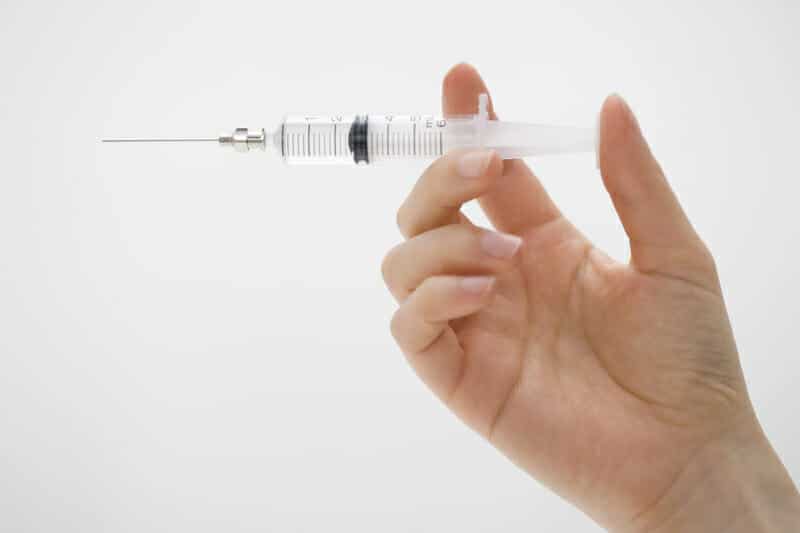
If you look online for the best dose of Cerebrolysin for the highest levels of neuroprotection possible, you’ll find that most dosing schemes are designed for people suffering from some kind of neurodegeneration:
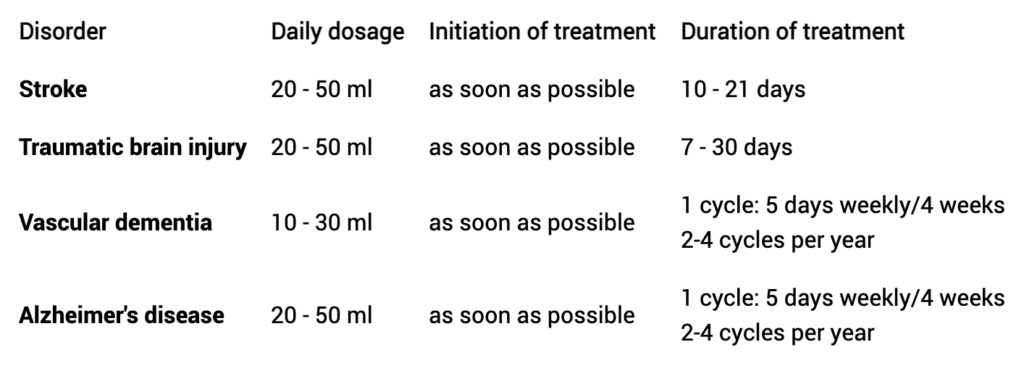
(Source)
The official website for Cerebrolysin, used for the picture above, also recommends keeping Cerebrolysin stored in a dry place at room temperature and removed from exposure to direct sunlight.
These recommendations are based on the Cerebrolysin consisting of “active substance cerebrolysin concentrate (complex of peptides obtained from the porcine brain tissue), 215.2 mg per 1 mL” (Source).
As for the best Cerebrolysin doage to take for enhanced cognition in healthy adults…
The overall consensus seems to be 5-10 mL injected subcutaneously once a day for a single cycle of 10-20 days.
Even then, there are some disagreements amongst biohackers with regard to the best dosing protocol for Cerebrolysin.
While some people insist you should cycle on and off Cerebrolysin for maximum effect, other people claim that cycling Cerebrolysin is not necessary at all and can be consistently used when needed.
You will also see claims that intramuscular injections (and intravenous injections in some cases) are more effective than subcutaneous injections, although this is entirely subjective to the individual.
As with nearly all of the peptides I endorse, you will have to experiment with Cerebrolysin and see which dosage, frequency of administration, and method of administration work best for you.
Cerebrolysin Side Effects
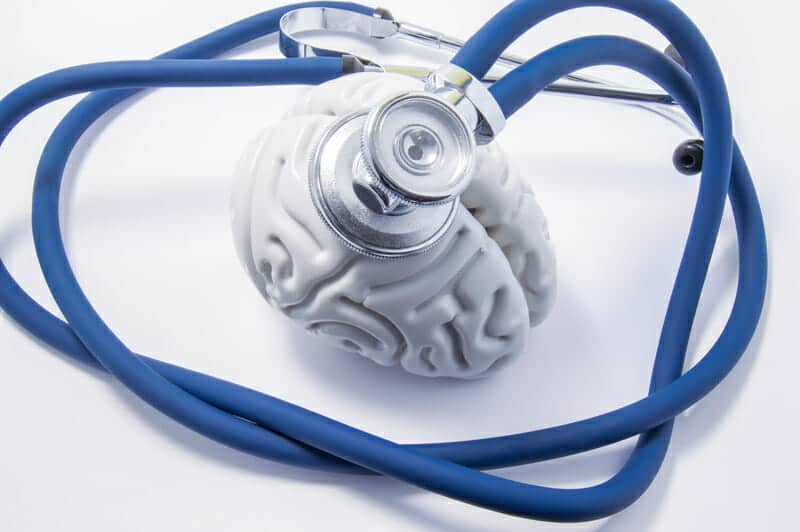
According to the official Cerebrolysin website, here are the most frequently reported side effects of Cerebrolysin:
- Dizziness
- Nausea
- Sweating
- Headaches
- Loss of appetite
- Diarrhea
- Redness/soreness at the site of injection
However, it should be noted that these side effects rarely occur and are very mild in nature.
As for people who should avoid taking Cerebrolysin, the peptide is “not recommended for use in patients suffering from epilepsy and in patients suffering from severe renal impairment” (Source).
But when you look at the results of double-blind human clinical trials that are placebo-controlled (such as this one), Cerebrolysin is always found to be well-tolerated and safe.
One meta-analysis of randomized controlled trials examining the use of Cerebroysin for treating strokes found that the peptide consistently did not differ from placebo with respect to side effects of a moderate and severe nature.
You’ll also find this same observation in “many years of clinical use and observations from postmarketing surveillance studies” (Source), along with studies using extremely high doses of Cerebrolysin.
Additionally, Cerebrolysin has safely been used in young infants and children suffering from cerebral palsy and developmental disorders.
With all of this said, I do want to raise an issue of importance for any healthy adult using Cerebrolysin for improved cognition…
You WILL NOT experience any positive benefits of Cerebrolysin if you are not actively
I discovered this from my own personal use of Cerebrolysin, and other users report the same finding:
“…you have to work hard on it, to see the results, it will improve the ability to learn and the retention, but not make you smarter just by taking it.
So if you were learning a language and doing structured study, taking Cerebrolysin should help accelerate your learning and ease of recall, but with no structured learning it does not seem to do a huge amount.”
So if you’re going to use Cerebrolysin, you’d better be working on a mentally challenging task and/or live a productive lifestyle.
Cerebrolysin vs. Dihexa – What’s the Difference?

I recently published a definitive guide to using the Dihexa peptide for cognitive repair, which might make you wonder why I’ve written an article about a supposedly similar peptide.
Rest assured, there are some notable similarities and differences you should know about…
Similarities between Cerebrolysin and Dihexa include:
- Both peptides are neuroprotective in nature
- Both peptides have been studied in cognitive disease states such as Alzheimer’s and dementia
- Both peptides have a mechanism of action that involves promoting synaptic formation
Differences between Cerebrolysin and Dihexa include:
- Dihexa is still an experimental peptide with promising potential (only 7 PubMed studies published between 1992 and 2020), while Cerebrolysin is far more extensively studied (+450 PubMed studies between 1973 and 2020) and established to deliver therapeutic results across numerous human clinical studies.
- Dihexa is proven to be 7 orders of magnitude more powerful than BNDF, whereas Cerebrolysin is directly involved in the release of BDNF
- Dihexa is a singular peptide, but Cerebrolysin is a mixture of numerous peptides derived from the brains of pigs
To make a long story short… Cerebrolysin is the more established peptide from a research and testing standpoint.
However, that should not stop you from experimenting with both peptides and seeing which one leads to a more favorable cognition-enhancing outcome.
Where to Buy Cerebrolysin
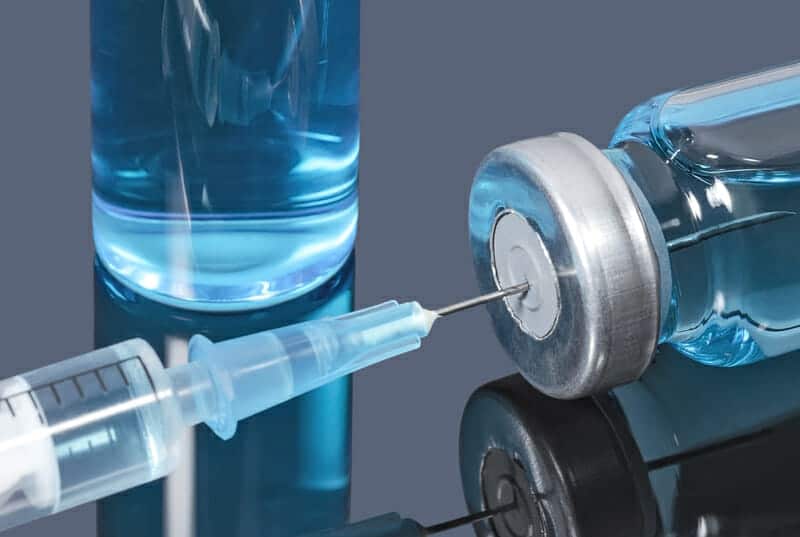
Unfortunately, I have yet to come across a legitimate and reputable source for high-quality Cerebrolysin.
It seems as if the majority of Internet vendors are offering impure Cerebrolysin, and I say this because the composition of the peptide across these vendors is nowhere near consistent.
When I manage to locate a source for 100% pure and potent Cerebrolysin, you will be the first to know.
But in the meantime, I would like to suggest an alternative peptide that will provide similar benefits: P21.
I have yet to investigate P21 thoroughly, but this helpful Reddit comment should be good news to biohackers who want to preview the cognitive benefits conferred by Cerebrolysin:
“Cerebrolysin and P21 are relatively similar in strength, but the difference is in their distribution of those benefits. They felt similar, but more like cousins than brothers.
Cerebrolysin was more “holistic” and definitely improved my cognition in almost every manner. But, it didn’t improve any aspect more so than another — it was evenly distributed.
P21 had similar improvements, but they were localized in only a few areas of my cognition. But in those areas, it was improved more dramatically than Cerebrolysin.
…Cerebrolysin is more bang for your buck, it improves your cognition in more areas and for a longer time period.
In my experience, both nootropics had lasting benefits after cessation. Cerebrolysin’s benefits lasted roughly half a year before returning to baseline, while P21 lasted perhaps a couple months.”
And when it comes to sourcing pharmaceutical-grade P21, you shouldn’t look anywhere else than Limitless Life Nootropics:
Use code JAY15 to get 15% off your order!
The product description accurately summarizes how P21 was directly derived from Cerebrolysin:
“P21 is a peptide that was developed by reverse engineering Cerebrolysin’s effect using epitope mapping. Researchers found that the main neurogenic and memory enhancing effects from Cerebrolysin were due to its ability to react to human CNTF.”
You’ll also notice that P21 can be administered via a nasal spray, which is far more convenient for people who are still struggling to inject themselves properly.
I have not personally tried P21 myself, so you will have to experiment and see how your body reacts to using this experimental peptide.
Additional Reading Resources for Cerebrolysin

As you’ve seen thus far, there is an OVERWHELMING abundance of information on Cerebrolysin and all of the wonderful things it can do for the human brain.
But I know that my readers want access to nothing less than the best information for each and every peptide I endorse.
So without further ado, here are some highly recommended reading resources for learning more abour Cerebrolysin…
Dr. Michael Moeller has a jam-packed 7-minute YouTube video that summarizes all of the main talking points of this article.
The ENTIRE 84-page product monograph from EVER Neuro Pharma, which tells you everything you could want to know about Cerebrolysin’s effects on the human body. It consists of approximately 25% of low molecular weight peptides (<10 k DA) and a mixture of approximately 75% free amino acids
The International Peptide Society released a 33-minute long webinar two years ago about the latest scientific breakthroughs made with Cerebrolysin.
Longecity, one of the world’s most populated nootropics discussion forums, has compiled a comprehensive collection of every user who has used Cerebrolysin for cognitive enhancement.
Longecity also has an extensive 74-page thread that is deemed “mandatory reading” for anybody who wants to know everything and anything about Cerebrolysin.
And as always…
Raise Your Vibration To Optimize Your Love Creation!
Subscribe to my email list so you can get exclusive access to the world’s best health optimization intel before anybody else finds out about it!

